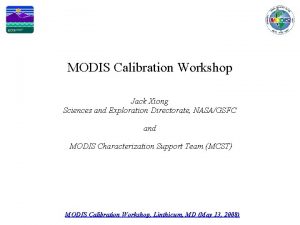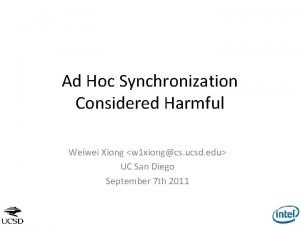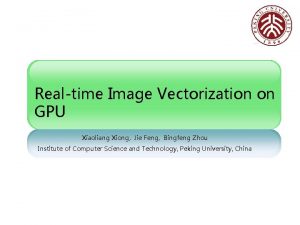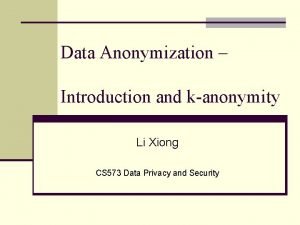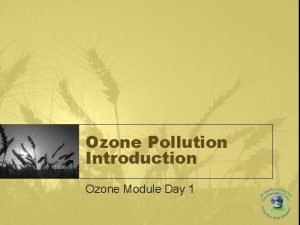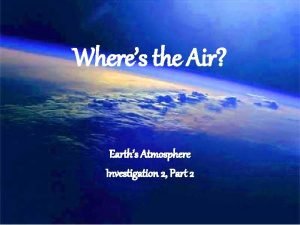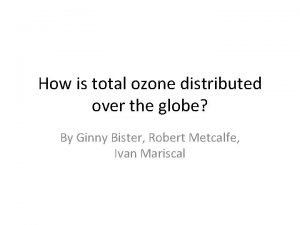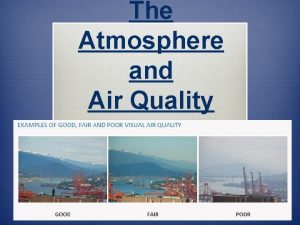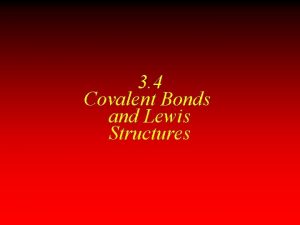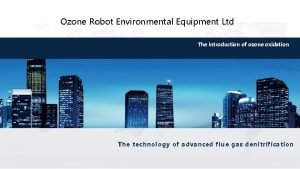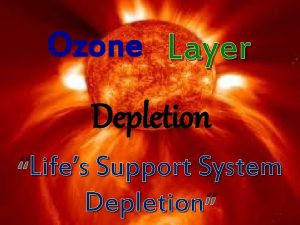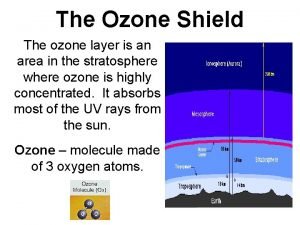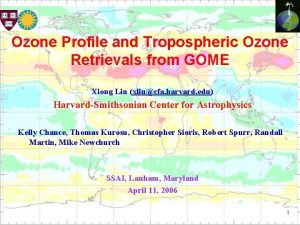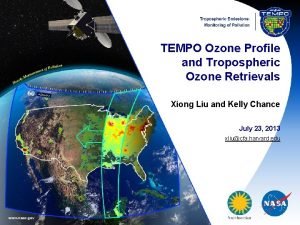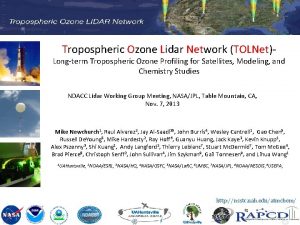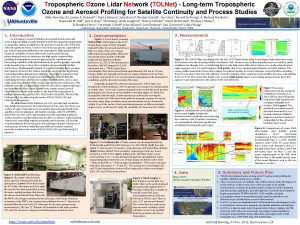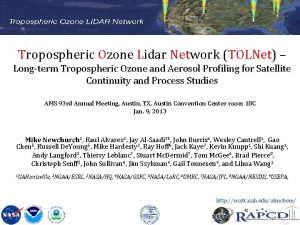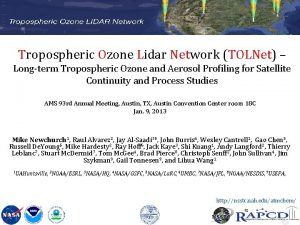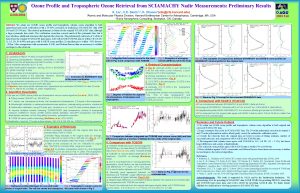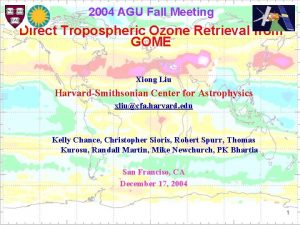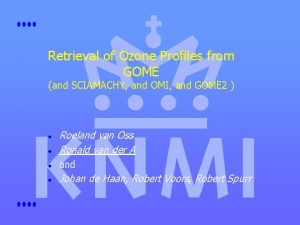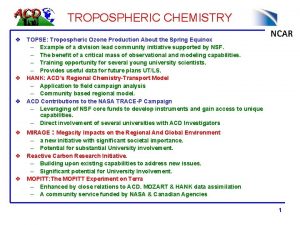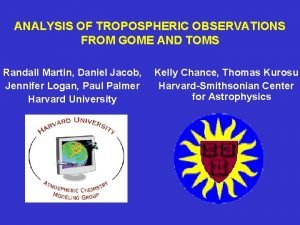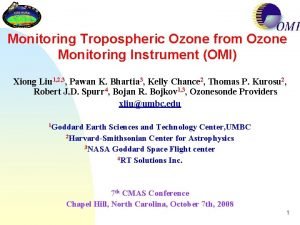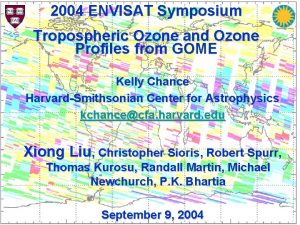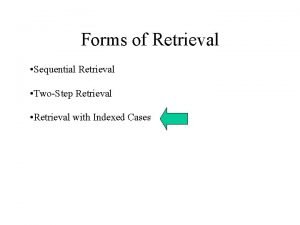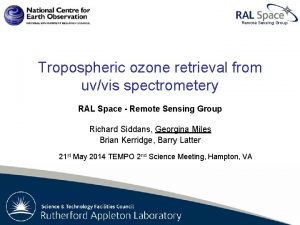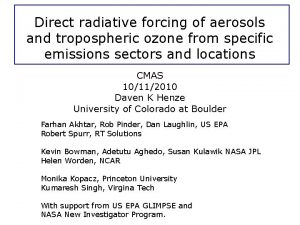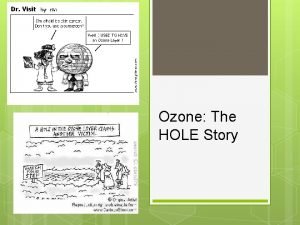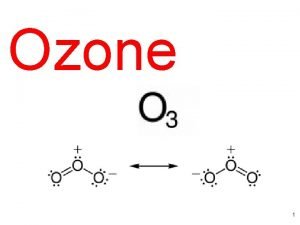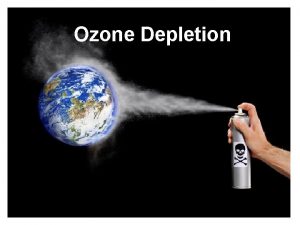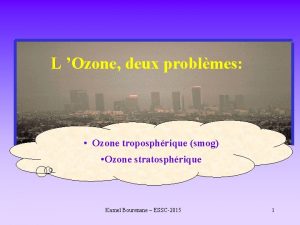Direct Tropospheric Ozone Retrieval from GOME Xiong Liu



























- Slides: 27

Direct Tropospheric Ozone Retrieval from GOME Xiong Liu Harvard-Smithsonian Center for Astrophysics xliu@cfa. harvard. edu December 20, 2004 1

Outline n Introduction n Algorithm description n Retrieval characterization n Intercomparison with Ozonesonde, TOMS, and Dobson n Global distribution of tropospheric ozone and comparison with GEOS-CHEM model results n Summary and future work 2

Introduction n Current tropospheric ozone retrievals are mainly based on the residual approaches: limited to certain latitude ranges and to monthly level n GOME: first nadir-viewing satellite instrument that allows direct tropospheric ozone retrieval from the space. n Several groups [Munro et al. , 1998; Hoogen et al. , 1999; Hasekamp et al. , 2001; van der A et al, 2002; Muller et al. , 2003; Liu et al. , 2004] have developed ozone profile retrieval algorithms from GOME: each of them demonstrates that limited tropospheric ozone information can be derived. n However, tropospheric ozone retrieval remains very challenging from GOME: u Require accurate and consistent calibrations. u Need to fit the Huggins bands to high precision. u Tropospheric ozone is only ~10% of total column ozone. 3

Algorithm Description n Inversion technique: Optimal Estimation n Measurements: 289 -307 nm, 326 -338 nm; Spatial resolution: 960× 80 km 2 n Perform detailed wavelength and radiometric calibrations: ØDerive variable slit widths and shifts between radiances/irradiances ØFit shifts between trace gas absorption cross-sections and radiances ØCo-add adjacent pixels from 289 -307 nm to reduce noise ØImprove polarization correction using GOMECAL (www. knmi. nl/gome_fd/) ØPerform undersampling correction with a high-resolution solar reference ØFit degradation for 289 -307 nm on line in the retrieval n Use LIDORT to simulate radiances and weighting functions n Improve forward model simulation: ØOn-line correction of Ring filling in of the solar and telluric absorption feature with first-order single scattering RRS model [Sioris and Evans, 2002] ØLook-up table correction of polarization errors [van Oss, personal comm. ] ØMonthly-mean SAGE stratospheric aerosols [Bauman et al. , 2003] ØGEOS-CHEM tropospheric aerosols [Martin et al. , 2002] 4

Variable Slit Widths and Shifts 5

Algorithm Description n Improve forward model simulation (continue): ØBrion’s ozone absorption cross-sections [Brion et al. , 1993] ØDaily ECMWF temperature profiles (www. ecmwf. int) ØDaily NCEP/NCAR surface pressure (www. cdc. noaa. gov) ØCloud-top height from GOMECAT [Kurosu et al. , 1999] ØCloud fraction derived at 370. 2 nm with albedo database [Kolemeijer et ØWavelength dependent albedo (2 -order polynomial) from 326 -338 nm al. , 2003] A priori: latitude and monthly dependent TOMS V 8 climatology (a priori and its variance) [Mc. Peters et al. , 2003, AGU] n n Retrieval Grid: 11 layers, almost the same as the Umkehr grid Ø Ø n Bottom 2 -3 layers are modified by tropopause/surface pressure Tropospheric column ozone is directly retrieved State Vector: 47 parameters 11 O 3 + 4 albedo (1 for ch 1 a & 3 for ch 2 b) + 4 Ring (1 for ch 1 a & 3 for ch 2 b) + 8 O 3 shift + 8 rad. /irrad. shift + 3 degradation correction (ch 1 a only) + 2 undersampling + 2 NO 2 + 2 Br. O + 2 SO 2 + 1 internal scattering Ø n Fitting residual: 0. 40% for band 1 a, 0. 17% for band 2 b, 0. 3% for both n Speed : ~17 hours on a 2 GHz processor for one day, could be operational 6

Retrieval Characterization n Averaging Kernel: characterize the retrieval n DFS: diagonal elements of averaging kernels n A priori influence: 7

Examples of Averaging Kernels 8

9

A Priori Influence (06/7 -9/1997) TOMS V 8 A Priori GEOS-CHEM A Priori Retrieval with TOMS V 8 A Priori Retrieval with GEOS-CHEM A Priori 10

Retrieval Errors 11

Validation and Intercomparison GOME data are collocated at 25 ozonesonde stations during 96 -99. n Validate retrievals against TOMS V 8, Dobson/Brewer total ozone, and ozonesonde. n Ozonesonde data mostly from WOUDC, and some from CMDL, SHADOZ, and NDSC. n Collocation criteria: n Ø Within ~8 hours, 1. 5° latitude and ~500 km in longitude Ø Average all TOMS points within GOME footprint Number of comparisons: 4429, 952, and 1937 with TOMS, Dobson, and ozonesonde, respectively. n http: //www. woudc. org; http: //croc. gsfc. nasa. giv/shadoz http: //ndsc. ncep. noaa. gov; http: //toms. gsfc. nasa. gov/ http: //www. cmdl. noaa. gov/infodata/ftpdata. html 12

Total Column Ozone Comparison GOME-TOMS: within retrieval uncertainties and saptiotemporal variability. n ØBiases: <3 DU except 38 DU at a few highlatitude stations Ø 1 : 2 -4 DU in the tropics, 4 -11 DU at higher latitudes. A Priori Retrieval n. GOME-Dobson: Dobson TOMS within retrieval uncertainties and ozone variability. ØBiases: <5 DU, and <8 DU at two high-latitude stations Ø 1 : 3 -6 DU in the tropics, 6 -19 DU at higher latitudes. 13

Stratospheric Column Ozone Comparison Column ozone between tropopause to~30 -35 km 1%-KI buffered 2%-KI unbuffered A Priori Retrieval Ozonesonde n. GOME-Ozonesonde: ØSystematic differences exists at Carbon Iodine, CMDL, SHADOZ stations ØBias: <3 DU (2%), except at Ny Ålesund and Neumayer (-3. 3% and 4. 5%) Ø 1 : 4 -9 DU (4 -6%) in the tropics and 10 -22 DU (5 -10%) at higher latitudes. 14

Tropospheric Column Ozone Comparison nn. GOME-SONDE withinretrieval uncertainties. ØØBiases: <4 <4 DU DU(15%) except– 5. 5, 4. 4, 5. 6 DU DU (16 -33%)atat. NyÅlesund, Naha, Tahiti Naha, NyÅlesund, ØTahiti 1 : 3 -7 Ø 1 A Priori Retrieval Ozonesonde DU (13 -28%) : 3 -7 DU (13 -28%) 15

Profile: Hohenpeißenberg (48 N, 11 E), 1996 -1999 The degradation is well handled GOME retrievals agree well with ozonesonde n n ØBiases: Ø 1 A Priori Retrieval Ozonesonde <2 DU (10%) : <10 DU (25%) 16

Profile: America Samoa (14 S, 171 W), 1996 -1997 Positive bias in the middle, negative bias at two ends, probably due to some systematic bias in radiance spectra and the wavelength dependent correction is not perfect. n ØBiases: < 4 DU (40%) Ø 1 : <4 DU (30%) Bias in tropospheric/stratospheric column ozone is reduced due to 17 canceling errors. n A Priori Retrieval Ozonesonde

Examples of Daily Global Tropospheric Ozone Low tropospheric ozone in tropical Pacific Bands of high ozone at mid-latitudes High ozone over biomass burning South Atlantic Paradox High ozone at high-latitudes during late winter and early spring 18

Monthly Mean Tropospheric Ozone (09/96 -11/97) 19

GOME vs. GEOS-CHEM Tropospheric Ozone SON, 96 R=0. 67 1. 8± 6. 8 DU DJF, 96 -97 R=0. 83 0. 0± 5. 3 DU MAM, 97 R=0. 82 2. 2 ± 4. 5 DU JJA, 97 R=0. 64 2. 5 ± 5. 7 DU 20

Summary n Ozone profiles and tropospheric column ozone are derived from GOME using the optimal estimation approach after detailed treatments of wavelength and radiometric calibrations and improvement of forward model inputs. n Retrieved total ozone compares very well with TOMS and Dobson/Brewer total ozone. n The profiles, stratospheric ozone, and tropospheric ozone compare well with ozonesonde observations except some stratospheric bias at Carbon Iodine stations, CMDL, and SHADOZ stations. n Global distribution of tropospheric ozone is presented. It clearly shows the signals due to biomass burning, air pollution, stratospherictroposphere exchange, transport and convection. n The overall structures of retrieved tropospheric ozone are similar to those of GEOS-CHEM, but significant differences exist. 21

Future Work n Complete tropospheric ozone retrieval for the 8 -year GOME data record and apply the algorithm to SCIMACHY and OMI data n With the aid of GEOS-CHEM, other observations, or model fields, understand the GOME/GEOS-CHEM similarities and differences, and investigate global/regional distribution of tropospheric ozone. n Tropospheric ozone radiative forcing n Tropospheric/stratospheric ozone variability 22

GOME vs. GEOS-CHEM Tropospheric Ozone 23

GOME vs. GEOS-CHEM Tropospheric Ozone 24

GOME vs. GEOS-CHEM Tropospheric Ozone 25

GOME vs. GEOS-CHEM Tropospheric Ozone 26

GOME vs. GEOS-CHEM Tropospheric Ozone 27
 Gome dept
Gome dept Gome dept
Gome dept Gome dept
Gome dept Gome dept
Gome dept Alex liu cecilia liu
Alex liu cecilia liu Líu líu lo lo ta ca hát say sưa
Líu líu lo lo ta ca hát say sưa Nadsvd
Nadsvd Maijue xiong
Maijue xiong Weiwei xiong
Weiwei xiong Shamanism hmong
Shamanism hmong Alonzo harlow israel
Alonzo harlow israel Xiong jie
Xiong jie Vong xiong
Vong xiong Ning yun wu xiong
Ning yun wu xiong Li xiong
Li xiong Protective ozone layer
Protective ozone layer Wheres the ozone layer
Wheres the ozone layer Ozone without borders
Ozone without borders Ozone layer levels
Ozone layer levels How is total ozone distributed over the globe
How is total ozone distributed over the globe Pcl lewis structure
Pcl lewis structure Ozone composition
Ozone composition Solid state marx generator
Solid state marx generator Vray sun
Vray sun Methyl nitrite lewis structure
Methyl nitrite lewis structure Poisonous
Poisonous Ozone layer depletion
Ozone layer depletion Negative effects of ozone layer depletion
Negative effects of ozone layer depletion






